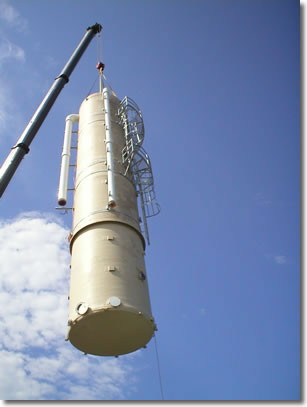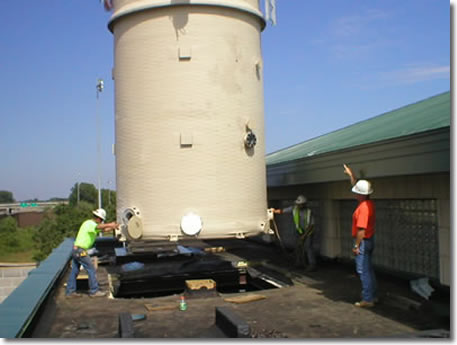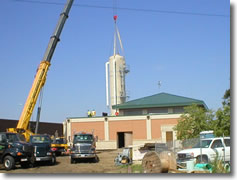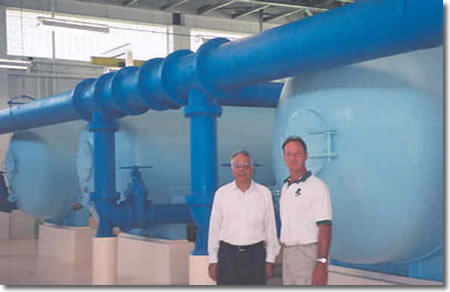Drinking Water Protection
- Drinking Water Protection Home
- About Us
- A-Z Index of Contaminants in Water
- Community Public Water Supply
- Drinking Water Grants and Loans
- Drinking Water Institute
- Drinking Water in Schools and Child Cares
- Drinking Water Revolving Fund
- Laws and Rules
- Noncommunity Public Water Supply
- Source Water Protection
- Water Operator and Certification Training
- Drinking Water Protection Contacts
Related Topics
- Annual Reports
- Drinking Water Risk Communication Toolkit
- Drinking Water Protection External Resources
- Fact Sheets
- Forms
- Invisible Heroes Videos: Minnesota's Drinking Water Providers
- Noncom Notes Newsletter
- Sample Collection Procedures (videos, pictures, written instructions)
- Waterline Newsletter
Related Sites
- 10 States Standards
- Clean Water Fund
- Health Risk Assessment – Guidance Values and Standards for Water
- Minnesota Well Index
- Water and Health
- Wells and Borings
Environmental Health Division
Blaine Deals with Water Issues with New Plants
From the Fall 2006 Waterline
Quarterly Newsletter of the Minnesota Department of Health Public Water Supply Unit, Waterline
A complete list of feature stories can be found on the Waterline webpage.
 |
|
The 60-foot-tall air-stripping tower is lifted and then lowered into place.
|
 |
An outpost on the northern edge of the Twin Cities when it established a public water system more than 40 years ago, the city of Blaine has seen tremendous growth in its population, which now approaches 50,000. The number of wells to provide water to the increasing number of residents has also grown.
Treatment of the water had been handled at individual wells with the addition of fluoride, chlorine, and a polyphosphate to sequester the manganese and iron in the water. However, aesthetic problems remained for some customers. In addition, 1,2- Dichloroethene was found in two wells, causing them to be taken off line.
The area of these wells with volatile organic chemicals (VOCs) became a Superfund site, and some federal money was made available for the purpose of designing a plant to treat these and other wells. Work on the plant, located off U. S. Hwy. 10 and Central Avenue NE in the southern part of the city, began in September of 2005. A 60-foot-high air-stripping tower will remove the VOCs, and a filter will deal with iron and manganese. This will allow the two wells that were taken out of service 12 years ago to go back on-line when the project is completed in mid-September of 2006.
The continued need for capacity to keep up with the city’s growth, combined with customer complaints about discolored water because of the iron and manganese, led Blaine to plan the construction of other plants. After a series of public informational meetings, the City Council approved a rate increase from 75 cents to $1.10 per 1,000 gallons for the first 24,000 gallons and $1.35 per 1,000 gallons for the next 24,000 gallons.
Construction on another plant, just south of Minn. Hwy. 242 on Oak Park Boulevard, began in January 2005 and went on-line one year later. Designated as Plant No. 2 (the one off Hwy. 10 is Plant No. 1), it serves two already existing wells, which are inside the plant, in addition to a new well that is a block to the east of the plant. As is the case with Plant No. 1, this plant is designed for iron and manganese reduction although it does not have the air-stripping tower for VOCs.
The plants have been and are being designed by Progressive Consulting Engineers, Inc. (PCE) of Brooklyn Center, Minnesota. Naeem Qureshi of PCE said the plants are using a process from Filtronics, Inc. of Anaheim, California, that involves pumping the well water into a chlorine contactor. High doses of chlorine are added to oxidize the iron and manganese. Sulphur dioxide is added as the water enters another contactor to neutralize any taste and odor before going to the filters.
Plant No. 2 has four pressure filters and a capacity of 8 million gallons per day (MGD). Blaine director of public works Mike Ulrich said Filtronics did a pilot study and found that it could reduce iron and manganese down to nondetectable levels with this system. "It’s a compact filter system," Ulrich added. "It doesn’t require a lot of space. A gravity plant would cost more to build, more to operate, and more to maintain."
Bids for Plant No. 3, which will be on 103 rd Street, near Centennial High School in the southeast part of the city, are now being let. Qureshi says that this plant, which will treat the water from two existing wells, should be completed by September 2007. In addition to the wells with each of the plants, Blaine has several outlying wells that continue to receive treatment through chemical addition at the wellhead. When the wells for Plant No. 1 are put back on-line, Blaine will have 17 wells.
However, the city is not done yet. It recently purchased 10 acres in the area of Lexington Avenue and Anoka County Road J. In the next five to seven years, it plans to construct a 12 MGD plant and a 2 million gallon water tower on the site. Will this be enough? Ulrich isn’t sure. Much depends on the growth of the city, he points out, including whether the Minnesota Vikings build a new stadium in Blaine. While the stadium will not greatly affect water demand by itself, ensuing development around the stadium could have a big impact.
For now, however, those are questions for the future. In the meantime, Ulrich and the citizens are finding relief in the quality and quantity they are receiving because of the new plants.
 |
 |
| Above are Blaine Water Treatment Plants 1 and 2. Below are Naeem Qureshi of Progressive Consulting Engineers and Mike Ulrich of Blaine. | |
 |
|